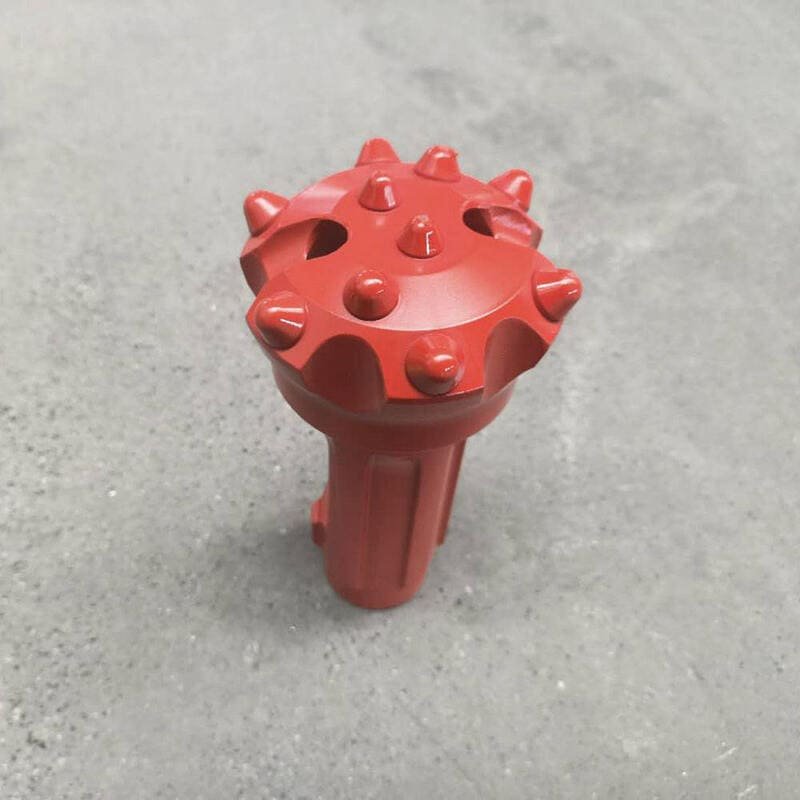Ever stood in the middle of a drilling task, uncertain about selecting the correct drill bit?
Convex face DTH drill bits are perfect for fast drilling and stability. They really work well in medium to hard rocks. These bits spread stress across rock surfaces equally. Vibrations decrease due to their design. Clogging is less likely in sticky situations.
I stood on a dusty construction site, struggling to understand which drill bit saves time and money. Convex face bits don't suit every job, like super hard rocks. They shine in many situations. Probably, these bits improve your drilling efficiency. They offer the perfect balance between fast cutting and longer-lasting tools. This balance is crucial. Read more to discover when they might be your project’s best ally.
Convex face DTH bits are best for extremely hard rocks.False
Convex face bits are not suitable for extremely hard or abrasive rocks.
Convex face DTH bits reduce vibrations in drilling.True
They enhance stability by reducing vibrations during drilling operations.
What makes convex face DTH drill bits a game-changer?
Ever started a project and found your tools just don't work well enough? I have. That's how I learned about the wonderful convex face DTH drill bits.
Convex face DTH drill bits perform well and drill quickly. They offer stable drilling and have fewer vibrations in medium to hard rocks. These bits are versatile. Sticky conditions do not clog them. They are essential for many drilling tasks.

High Penetration Rates
I remember working under a tight deadline at a quarry. Time was important. Every minute counted. I first used convex face bits then. Their design delivers impact energy very efficiently onto rocks, leading to faster rock breaking. We managed fast work demands in construction and quarrying1 without reducing our quality. Quality stayed high.
Effective in Medium to Hard Rock
Convex bits spread stress evenly, aiding in quicker breakdown of tough materials. These bits do very well in different geological conditions, though they might not be ideal for extremely hard or abrasive rocks.
| Rock Type | Suitability |
|---|---|
| Medium Rock | Highly suitable |
| Hard Rock | Suitable |
| Extremely Hard | Less suitable |
At the quarry, I saw the drill cut through stubborn rock powerfully.
Enhanced Drilling Stability
Stability often troubled me. The convex design reduced vibrations, minimizing the risk of deviation. Projects needing precise control benefit from this, ensuring smooth operations2 even with longer drill strings. Stability is a game-changer.
Avoiding Bit Balling
Sticky clay formations were my biggest problem. The convex shape of bits really stops clogging by effectively ejecting debris quickly. In moisture-rich places where rocks get sticky, drilling progress is uninterrupted, allowing for uninterrupted drilling progress3.
Versatile Applications
Convex bits work on both rocks and softer formations, balancing aggressive cutting with long life. They are my choice for many drilling tasks4. Convex bits prove their reliability again and again, preparing me for any ground challenge.
Convex bits prevent bit balling in all rock types.False
Convex bits mainly prevent bit balling in sticky conditions, not all types.
Convex face bits are less suitable for extremely hard rocks.True
Their design is better for medium to hard rocks, not extremely hard ones.
How do convex face bits handle different rock types?
Have you ever found yourself in a scenario where the correct tool truly changes everything?
Convex face bits perform well in medium to hard rocks. The design lets them distribute stress evenly. Vibrations decrease. High penetration rates occur. They work with many types of rock. Stability is very good.
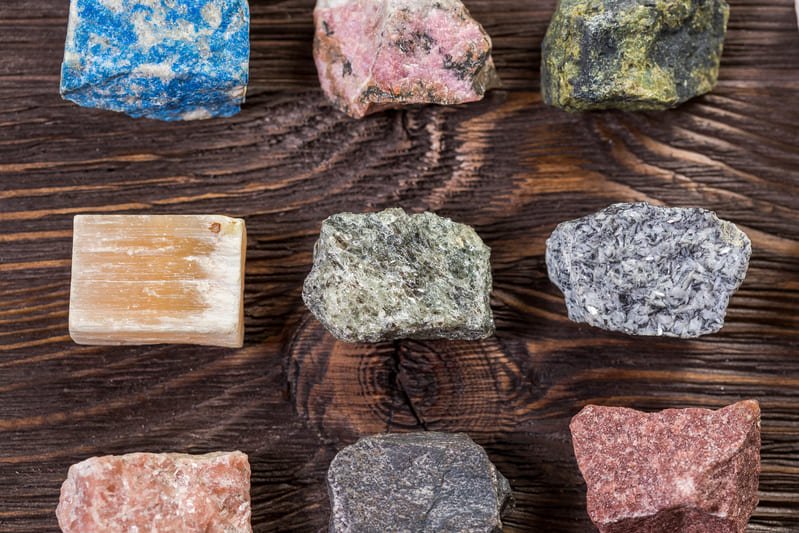
Performance in Medium to Hard Rock Formations
I remember the first time I truly saw the power of the right tool. We worked on a site with both medium and hard rock. The team had challenges. Swapping to convex face bits changed everything. These bits spread stress evenly, breaking down tough materials faster and reducing equipment wear.
This simple swap meant we moved forward faster, with less waiting time.
| Rock Type | Performance Level |
|---|---|
| Medium Rock | High |
| Hard Rock | Moderate to High |
High Penetration Rates for Efficient Drilling
Time really mattered in projects like that one with tight deadlines. Convex face bits were crucial due to their high penetration rates. Their shape directs energy straight into rock, causing quicker breaks. It's amazing that something small makes such a big difference. Curiosity about these designs? Check out convex face designs5.
Stability and Drilling Accuracy
Stability remains crucial in drilling, and these bits also shine here by lowering vibrations, which leads to fewer mistakes—a real help with longer drills or when precision matters.
| Feature | Benefit |
|---|---|
| Reduced Vibrations | Improved Accuracy |
| Enhanced Stability | Consistent Performance |
For more on lowering vibrations, explore drill bit stability6.
Versatile Application Across Varied Formations
These bits impress beyond rocky areas. Their design stops bit balling in sticky places by removing debris well, keeping the cutting surface clean—vital in wet or clay-heavy spots. It's like finding a perfect jacket for all weather.
More applications find mention at versatile drilling applications7.
The mix of high penetration rates, stability, and versatility makes convex face bits my top choice for various projects. Whether it's tough rock or sticky spots, they consistently do the job.
Convex face bits have high penetration rates in hard rock.True
Their design focuses impact energy, leading to faster fracturing.
Convex face bits are unsuitable for sticky formations.False
Their design efficiently ejects debris, preventing bit balling.
When is it best to avoid convex face DTH drill bits?
Have you ever stood in the middle of a drilling task just to discover that the bit is wrong? I have faced this situation as well and it's really frustrating.
Avoid convex face DTH drill bits for very hard or abrasive rocks. These rocks cause quick damage to tools. Other designs are probably cheaper and last longer.
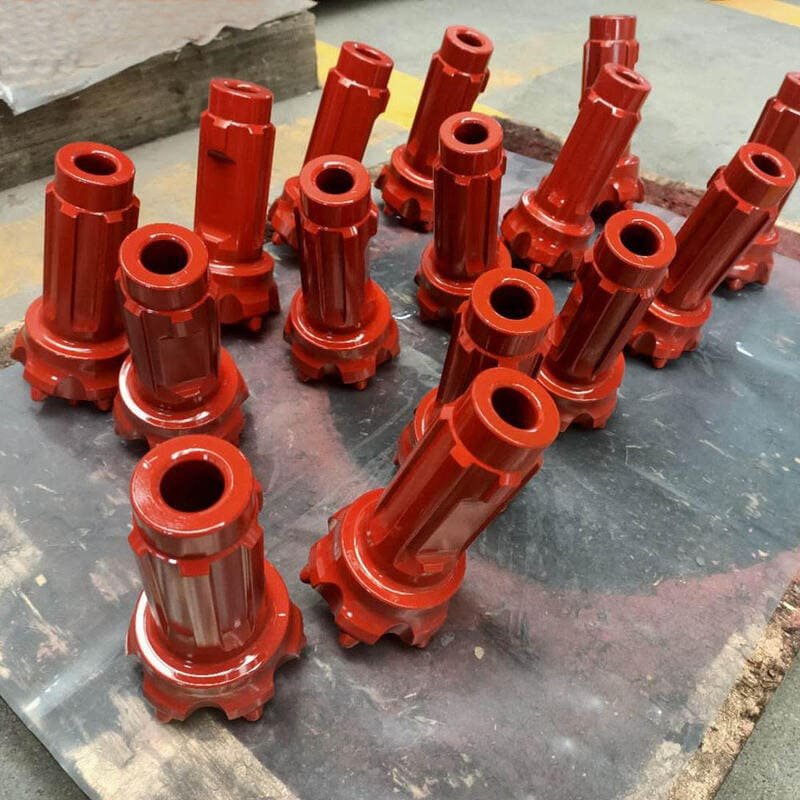
Extremely Hard or Abrasive Rock Formations
Convex face drill bits work well in medium to hard rock. However, in very hard or abrasive rocks, they can cause problems due to rapid wear from stress and rubbing. This means you need to replace them often, causing delays and increased replacement frequency8.
| Rock Type | Recommended Bit Design |
|---|---|
| Medium | Convex Face |
| Hard | Convex or Double Gauge |
| Extremely Hard | Flat or Chisel |
| Abrasive | Double Gauge or Reaming Shell |
Sticky or Clay-Rich Formations
Once, I dealt with sticky, clay-rich areas that adhered to everything. While convex bits help prevent clogging, sometimes the clay is too sticky. In these scenarios, using a bit design that enhances debris ejection can minimize the risk of bit balling and maintain operational efficiency9.
Precision Drilling Needs
Precision is crucial in some projects. Although convex bits provide stability, sometimes more control is necessary for high precision applications like directional drilling. A bit with better guidance features ensures better directional accuracy and prevents costly errors by reducing deviation risks.
Situations Demanding Longevity
Sometimes, the bit must last long. Fast-wearing bits are not ideal then. The aggressive cutting nature of convex bits leads to quick wear; therefore, opting for a more robust design could provide better cost-effectiveness10 by reducing the need for frequent replacements.
From these experiences, I see how important it is to pick the right bit. This choice saves time and resources. Projects go smoothly when bits match needs.
Convex bits excel in sticky, clay-rich formations.False
Convex bits struggle in dense, clay-rich environments due to clogging.
Flat drill bits are ideal for extremely hard rock.True
Flat bits provide durability and withstand intense stress in hard rock.
How Do Convex Face Bits Enhance Drilling Stability?
Ever thought about why drilling projects sometimes seem like an adventure? The answer could rest in the tool you're using꞉ convex face bits.
Convex face bits help stabilize drilling. They cut down vibrations and keep the drill steady against rocks. This stability really helps control the direction of drilling. Their smart design spreads stress evenly over the surface. This reduces wear over time and keeps the drill on track. They are really ideal for drilling through different rock types.
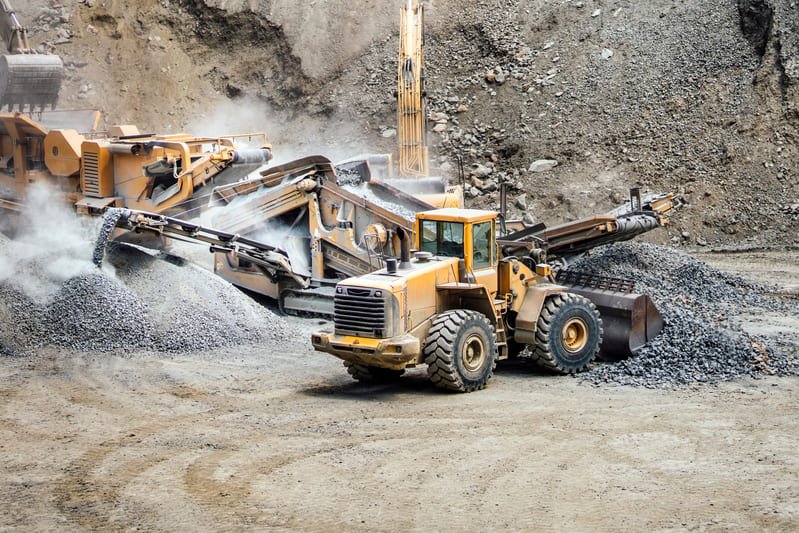
Understanding Convex Face Bit Design
I recall my first experience at a tough drilling site; there were feelings of excitement and nervousness. Convex face bits, with their outward curves, changed everything for me. Unlike flat or concave bits, these distribute stress more evenly. This leads to less damage and reduced vibration. They are very useful in challenging places, like medium to hard rock formations.
Drilling Stability
The real benefit of convex face bits is stability. Think of trying to keep balance while your chair rocks - that is the effect of vibration on drilling accuracy. By cutting down on vibrations, convex bits lower the chance of drifting from the path. Precision is vital, especially in directional drilling. My experience shows these bits stay firmly against rocks, avoiding slips that mess up the process.
Various Rock Types
Convex face bits are versatile, like a Swiss Army knife for drilling. They work well in different rock types. I've witnessed their success in sticky formations where other bits fail. For example, in formations prone to collecting material, the convex shape stops buildup. It's a relief to see debris cleared efficiently, keeping surfaces clean.
| Rock Type | Convex Face Bit Benefit |
|---|---|
| Medium to Hard Rock | Better stress distribution and faster breakdown |
| Sticky Formations | Reduced clogging and efficient debris ejection |
| Abrasive Conditions | Moderate suitability with balanced performance |
Smooth Operations and Efficiency
In tasks needing long drill strings or precise control, the stability of convex face bits is highly valuable. I have experienced smoother work, with fewer issues tied to vibration and deviation. This raises drilling speed and efficiency.
When prepping for a project, consider the unique benefits convex face bits bring. Their stability is truly a game-changer across different geological conditions.
For further details on choosing the right drill bits, explore more to find what suits your needs best.
Convex face bits reduce vibration in drilling.True
The convex design minimizes vibrations, enhancing stability during drilling.
Convex face bits are ineffective in sticky formations.False
They prevent material buildup and efficiently eject debris, aiding in sticky formations.
How Can I Ensure My Convex Face Bits Perform Optimally?
Imagine this꞉ your drilling work stops because tools are too old. Let's stop this from happening again!
Inspect convex face bits often to see if they are wearing down. Keep them clean after using them. Store them correctly. Use suitable lubricants. Lubricants stop them from getting too hot. These actions really improve tool efficiency. Tools last longer with proper care.
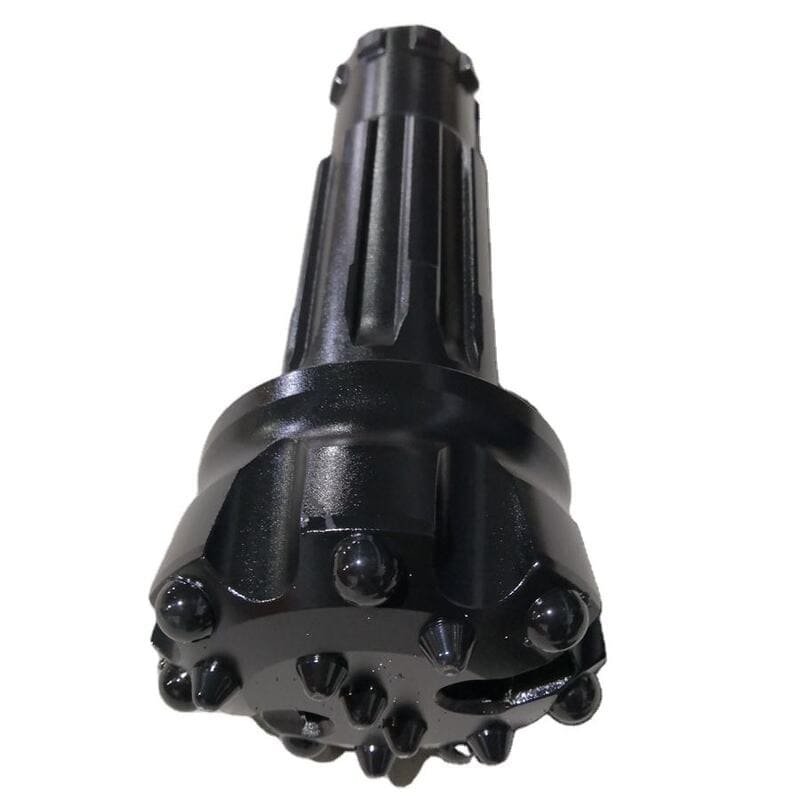
Regular Checks for Wear and Damage
Examining tools feels like being a detective searching for hints. Checking your convex face bits regularly helps find issues early. Look for dull or cracked edges. These small problems really affect drilling. An inspection schedule11 avoids expensive mistakes. Yes, it really does.
| Inspection Frequency | Recommended Actions |
|---|---|
| Weekly | Visual check for visible damage |
| Monthly | Detailed analysis under magnification |
| After Heavy Use | Full structural integrity review |
Cleaning and Dust Removal
Skipping a shower after a long day feels unpleasant. Dirt on your bits feels the same. Cleaning bits after each use prevents them from overheating, keeping drilling fast. Sometimes, using compressed air or water jets removes stubborn dust. Consider investing in cleaning tools12 specifically designed for drill bits; it really changed my routine.
Correct Storage Methods
I stored my bits carelessly once and they rusted—big lesson learned! Keep them in a dry, cool place with covers. Storage racks maintain their shape and reduce stress.
- Storage Tips:
- Separate by size and type
- Use covers on sharp ends
- Avoid stacking bits together without dividers
Lubrication and Cooling Practices
Right lubricants are like a spa for bits; they reduce friction and stop overheating. Always check for compatibility with bit material as wrong ones cause problems. A good cooling system keeps temperature steady.
Observing Drilling Conditions
Drilling environments are unpredictable. Observing conditions helps adjust your methods, keeping bits working longer and better. Harder rocks may need different pressure or speed settings—conditions really influence performance, they really do.
For more tips, read our guide on adjusting drilling methods13 for different conditions.
Weekly inspections prevent costly delays.True
Regular checks catch wear early, avoiding operational disruptions.
Storing bits in humid areas prevents rust.False
Humidity promotes rust; dry storage is essential for protection.
Conclusion
Convex face DTH drill bits excel in medium to hard rock, offering high penetration rates, reduced vibrations, and versatility while preventing clogging in sticky conditions. Ideal for efficient drilling tasks.
-
This link provides detailed insights into how convex face bits improve efficiency in construction and quarrying projects. ↩
-
Learn about the stability benefits offered by convex designs and their impact on drilling precision. ↩
-
Discover how convex bits prevent bit balling and improve performance in sticky conditions. ↩
-
Understand the versatility of convex bits and their applications beyond hard rock drilling. ↩
-
Understand the specific benefits of convex face designs for improving drilling efficiency and penetration rates. ↩
-
Learn about methods that enhance stability and reduce vibrations in drill bits to improve accuracy. ↩
-
Explore how convex drill bits can be applied across various geological conditions and materials. ↩
-
Understanding wear patterns helps choose the right bit for durability in harsh conditions. ↩
-
Enhanced ejection techniques prevent clogging, ensuring smoother operations in sticky formations. ↩
-
Exploring alternatives can optimize costs and extend bit life in demanding projects. ↩
-
Learn how scheduling regular inspections can prevent unexpected failures and maintain efficient operations. ↩
-
Discover specialized cleaning tools that enhance maintenance efficiency and prolong bit life. ↩
-
Find strategies to adjust drilling methods based on different rock types to optimize bit performance. ↩

